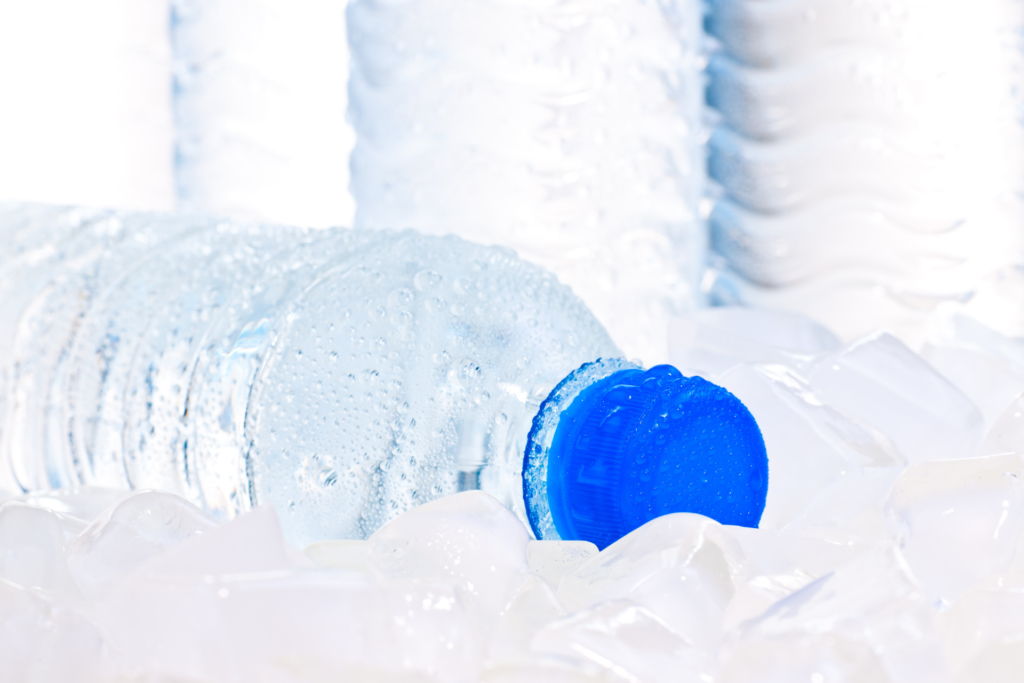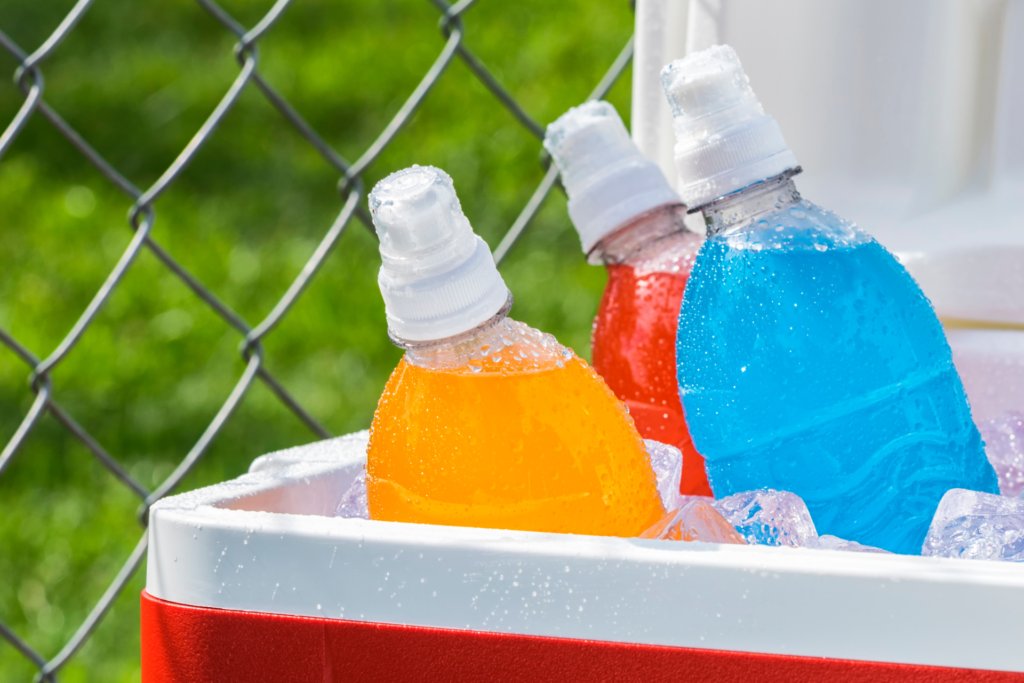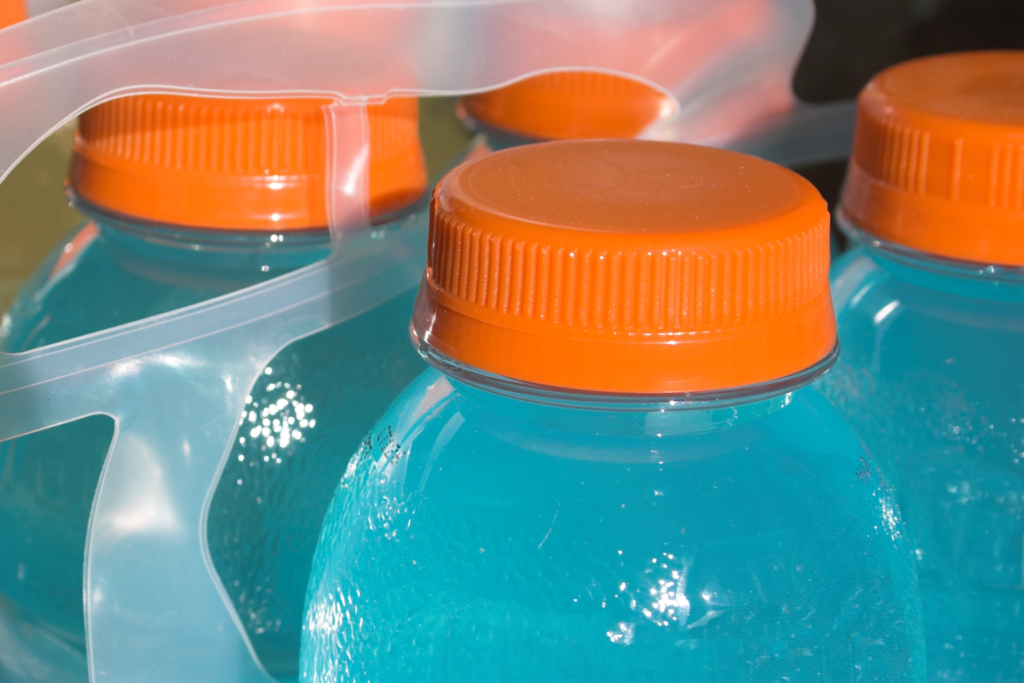Warmer weather means that the outdoor sports and activities are in full swing. And sports drinks ads are everywhere. I was asked recently about my opinion regarding sports drinks. Ever wonder if you need a sports drink?

Are sports drinks worth what they cost? What are the advantages of drinking them?
Let’s take a look at the science of sweating and what happens at a cellular level. When we sweat, we lose several different nutrients.
First of all, we lose water.
As the water moves out of our cells, it brings other micronutrients with it. The most notable of those are the electrolytes sodium and potassium – the fluid regulators.
They act as biological fluid regulators by picking up or dropping an electric charge and thereby conducting electricity. This means that they direct the flow of nutrients into and waste products out of our cells — a pretty important job.
Alright, so we’ve established that when we exercise, we lose
- water,
- electrolytes,
- and we obviously burn energy, so we spend carbs.
Those 3 things are what we need to replenish after exercise.
What needs to be replaced immediately after exercise?
Water.
That’s it – unless we are exercising strenuously for several hours in the heat of summer. I’m talking about Olympic level training in the summertime.
Why is that? Because we will replace the other nutrients in our diets, likely at the next meal or snack.
Any beverage (except alcohol) will hydrate you.

Now let’s look at some of the marketing claims that sports drinks tout.
Diving into the science . . .
Some sports drinks offer BCAAs.
What are BCAAs? Why do we need them? Where do they come from? Should I seek a recovery beverage that contains them?
BCAAs are branched chain amino acids – there are 3 of them.
Humans utilize 20 amino acids to build protein, important for maintaining an immune system, repairing tissues, growth, and numerous other functions.
Many of those amino acids our bodies can make from other components that we have “on hand”. These are called non-essential amino acids. There are 11 of them.
They are non-essential because our bodies make them, and we don’t have to include them in our diets. We still need them (so they are actually essential in that sense), but our bodies make what we need under normal circumstances.
Keep in mind – in times of stress or illness, this might change and we might not be able to produce enough non-essential amino acids. So, we actually have another category called conditionally essential, but that discussion is for another day.
The essential amino acids are ones that we cannot manufacture. It is essential that we eat them.
There are 9 of them in total, and 3 of them are branched-chain amino acids. These BCAAs are widely found in meat, dairy products, legumes, and many other foods.
If you are selecting your sports drink because it offers BCAAs, note how much of the BCAAs are added. Does it even tell you? Usually not. Why? Because hardly any is present. Just enough to make the marketing claim. What do we use the BCAAs for? Anything our body needs protein for, but it cannot use them alone. We need them in ratio with all the other amino acids. So BCAAs in and of themselves are worthless for building protein without the other essential amino acids. The take home message: include protein rich foods in your daily intake.
What electrolytes should I look for in a sports drink?

Specifically sodium, potassium, and magnesium. Does the drink have sodium? We lose sodium in sweat. Check the label of a sports drink. You’ll see the amount of sodium listed, and it’s probably between 20 mg and 100 mg. Most are around 20-30 mg. 30 of sodium is nothing to brag about. It’s only 1% of what we need in a day – hardly enough to mention. Yet sodium is the primary nutrient that we lose in sweat. This is the one that helps prevent muscle cramping. On a hot day, if you’re outside for a prolonged period and lose sweat that you cannot replace through diet in the next few hours, then you may want to drink a sports drink with adequate sodium. Almost all of the time, though, the sodium is replaced at the next meal or snack.
Magnesium and potassium don’t have to be replaced immediately. Most sports drinks contain only very small amounts of these as well. I’m talking about less than 5% of what we need. And these minerals are best absorbed from foods. What foods? For potassium, look for fruits and vegetables. For magnesium – legumes, seeds, and nuts.
What about the antioxidants advertised on the label?
We are learning so much about antioxidants, and one of the most notable things we’re discovering is that antioxidants work better together WITH other components in food, so consuming them together in real foods will leave you better off.
B Vitamins
What are B Vitamins and why are they sometimes included in a sports drink? The B vitamins are a group of nutrients that were discovered in the early 1900s. They act as coenzymes or enzyme helpers, facilitating processes that result in energy production. The first one was discovered when it was found to cure beri beri (a devastating disease caused by a thiamin deficiency). It was named Vitamin B, and other vitamins were named alphabetically (vitamins A, C, D, etc.). Its name was later changed to Vitamin B1, as other coenzymes were identified. Now we know of several B vitamins.
You’ll sometimes see vitamins B6 (pyridoxine) or B12 (cyanocobalamin) added to sports drinks. While these vitamins do play important roles in the chemical reactions that produce energy, they are abundant in a diet that includes legumes, meat, dark leafy greens, fruits, and fortified cereals. Consuming them in a sports drink has not been shown to improve recovery any better than getting them from foods.
What else is in sports drinks?

Sports drinks have a considerable amount of added sugar or artificial sweeteners, artificial colors, flavors, and preservatives that we simply don’t need.
How do costs compare between sports drinks and other replenishment options such as chocolate milk or bottled water?
Obviously this will vary, depending on where you live.
In the Midwest, I have found In my local superstore, prices range from $0.04 per ounce to $0.25 per fluid ounce.
Compare that to chocolate milk, at $0.03 per fluid ounce that offers all of the above, plus high quality protein with all 20 of the amino acids we need, plus minerals such as calcium, magnesium, phosphorus, potassium in biologically significant amounts, plus vitamins A and D, and B vitamins. That’s hard to beat! (Of note, chocolate milk doesn’t offer much vitamin 6, though. Chicken is a better source for vitamin B6. )

What are your recommendations regarding sports drinks?
If you really love the taste and it fits into your budget, enjoy it. Enjoy it because you like it, not because of a marketing claim.



